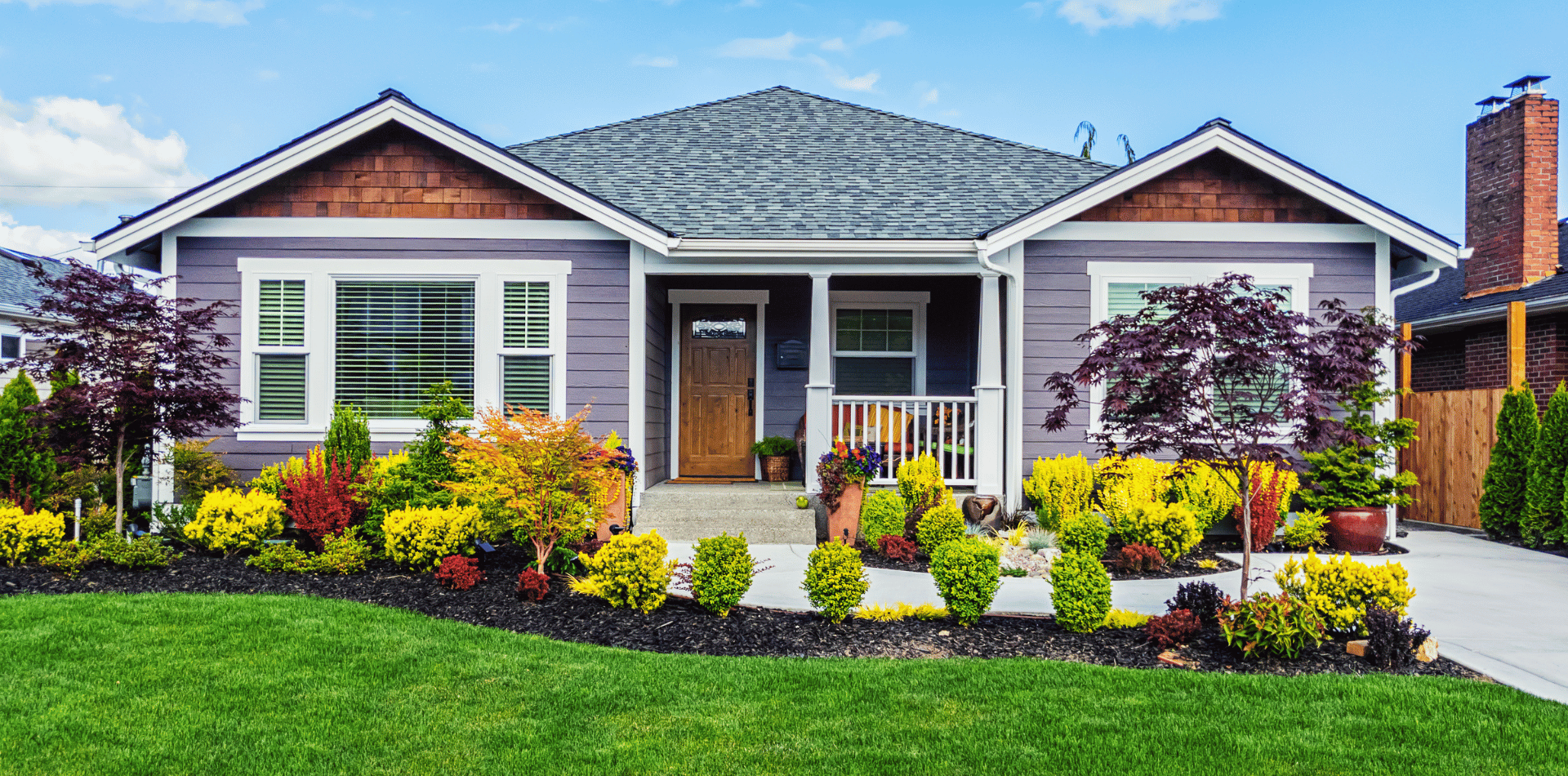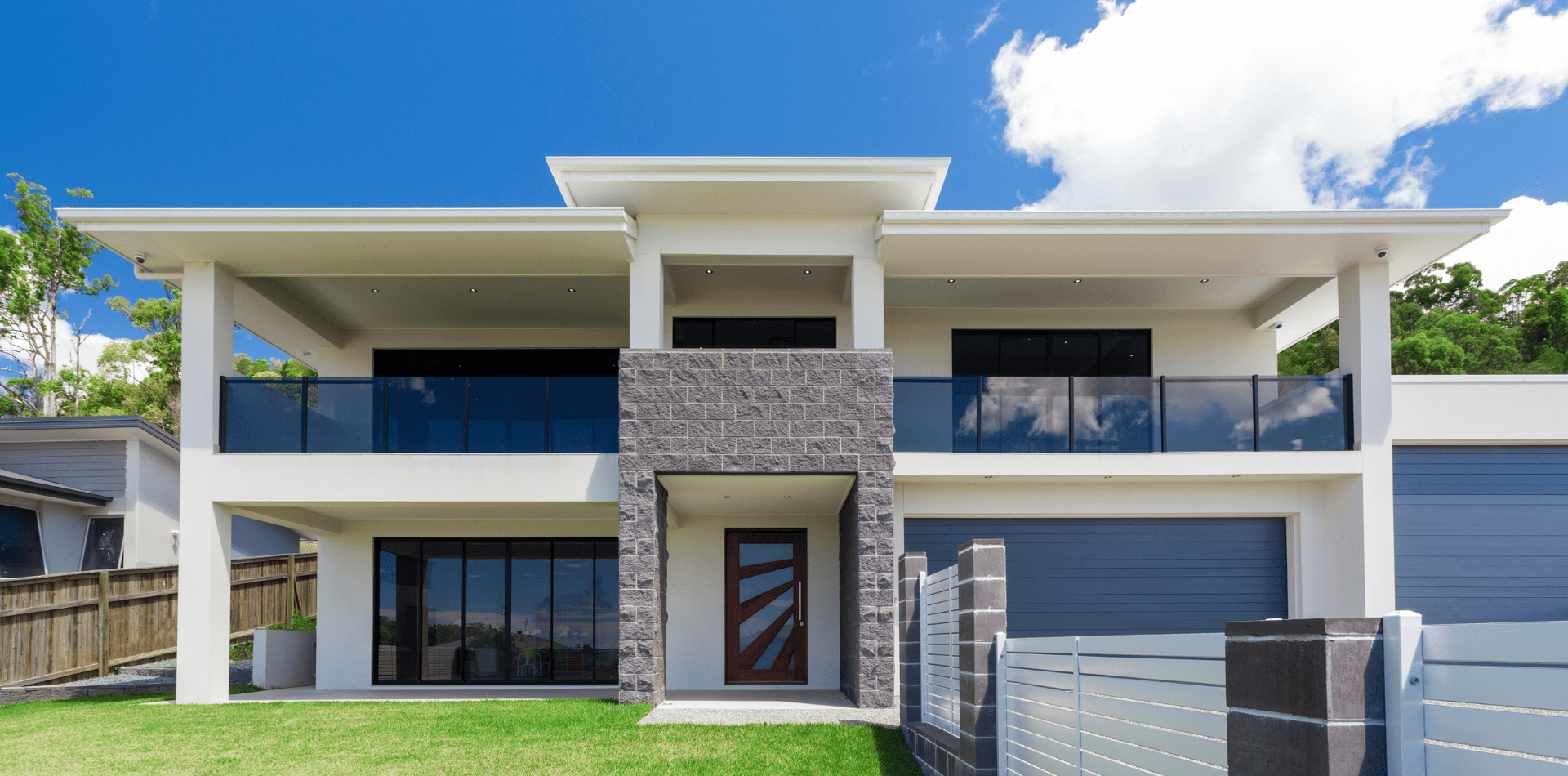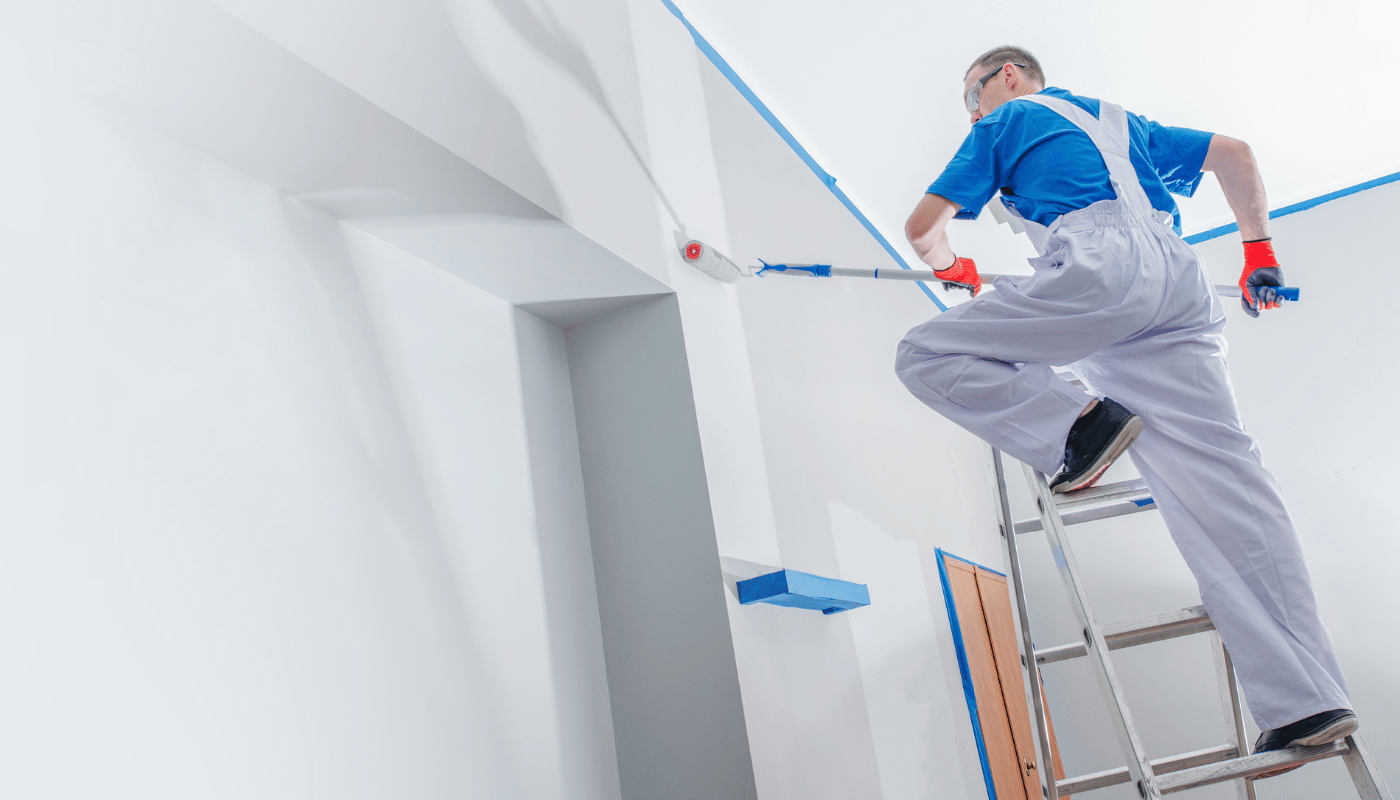Signs Your House Needs a Fresh Coat of Paint

While our homes are our sanctuaries, maintaining their exterior beauty often slips down our list of priorities until the signs become too apparent to ignore.
The paint on our houses does more than just add colour and appeal; it serves as a protective layer against the elements, helping to ensure the structural integrity of our homes.
Recognising the signs that it's time for a fresh coat of paint is crucial in keeping your home in top condition.
Let's look through the vital signs, preparation tips, and the painting process to help rejuvenate your home's exterior.
The Importance of Exterior Paint
Protection Against the Elements
Exterior paint plays a crucial role in protecting your home against various elements, acting as a first line of defense that contributes significantly to the longevity and durability of the building materials.
Moisture Barrier
Water is one of the most significant threats to a home's structure, leading to issues like rot, mould, and structural damage.
Quality exterior paint creates a water-resistant barrier that prevents rain, hail, and ambient moisture from penetrating the building materials.
This protective layer helps maintain the integrity of wood, render, and other materials by repelling water and allowing it to run off the surface rather than soaking in.
By limiting moisture absorption, paint helps prevent the rotting of wood and the rusting of metal components, ensuring that the structural elements of your home remain strong and intact.
UV Protection
The sun’s ultraviolet (UV) rays can be highly damaging to homes, causing materials to fade, weaken, and deteriorate over time. Exterior paint contains pigments and binders that reflect or absorb UV rays, thereby reducing their harmful impact on the home. This UV protection is especially important for wood surfaces, which can warp, crack, or degrade under constant sun exposure.
By shielding the underlying materials from UV radiation, paint helps to preserve the strength and appearance of the home’s exterior, extending the life of its surfaces.
Temperature and Weather Resistance
Changes in temperature can cause building materials to expand and contract, leading to cracks and other forms of damage. Exterior paint is formulated to withstand these fluctuations, providing a flexible coating that can adjust to the expansion and contraction of surfaces without cracking or peeling. This elasticity is crucial for maintaining a protective seal around the home, regardless of the weather conditions.
Also, quality exterior paints are designed to resist the damaging effects of wind, hail, and other weather-related forces. By forming a durable, weather-resistant layer, paint helps prevent physical damage to the home’s exterior, ensuring that it remains secure and stable through various conditions.
Protection Against Biological Growth
Moisture accumulation on the exterior of a home can lead to the growth of mould, mildew, and algae, which not only detracts from the home's appearance but can also cause health issues and material decay.
Exterior paint with anti-fungal and anti-microbial properties inhibits the growth of these biological agents, keeping the exterior surfaces clean and healthy.
By preventing the establishment of mould and mildew, paint contributes to both the aesthetic and structural integrity of the home.
Increases Lifespan of Siding Materials
Exterior paint extends the lifespan of siding materials by providing an additional layer of protection.
Whether your home features wood, vinyl, fibre cement, or another type of siding, a coat of paint can prevent wear and tear, reducing the need for costly repairs or replacements.
By preserving the condition of siding materials, paint ensures that your home remains beautiful and durable for years to come.

Boost Curb Appeal and Increase Property Value
A fresh coat of paint is one of the most straightforward and effective ways to boost both the curb appeal and property value of a home.
This enhancement goes beyond mere aesthetics, influencing perceptions, and financial considerations in several key ways.
First Impressions Matter
Curb appeal refers to the overall attractiveness of a property as seen from the street, and it plays a crucial role in a homeowner's pride and a property's desirability on the market.
A fresh coat of paint significantly improves a home's appearance, creating a positive and inviting first impression. Well-chosen exterior colours can transform a dull or aging property into a vibrant and appealing home, catching the eye of potential buyers or simply making the home a neighborhood standout.
This initial appeal can be decisive in a buyer's decision-making process, often influencing whether they decide to explore a property further.
Reflects Maintenance and Care
A freshly painted home signals to potential buyers and observers that the property is well-maintained.
Regular maintenance, including painting, suggests that other aspects of the home, both visible and hidden, are also likely to have been attentively cared for.
This perception reduces concerns about potential problems and increases the home's marketability.
Buyers are often willing to pay a premium for homes that appear move-in ready and require minimal initial maintenance, which can directly impact the property's value.
Protection and Longevity
Aside from aesthetics, a fresh coat of paint provides essential protection against environmental factors, as previously discussed. This protective quality not only helps maintain the structural integrity of the home but also appeals to potential buyers who recognise the value of this safeguarding.
A well-protected home is more likely to endure over time with fewer repairs, an attractive prospect that can positively influence its market value.
Modernisation and Trend Alignment
Updating a home's exterior paint can modernise its appearance and align it with current trends, making it more attractive to potential buyers.
Colour preferences and styles evolve over time, and homes that appear outdated can be less appealing on the market.
A fresh coat of paint, especially in contemporary colours, can rejuvenate an older home, making it competitive with newer properties and appealing to a broader range of buyers.
Emotional Connection
Colour has a profound impact on emotions and perceptions.
The right choice of exterior paint colour can create an emotional connection with potential buyers, making the property feel like a home they can envision themselves living in.
This emotional appeal can be a powerful motivator in the buying process, potentially leading to quicker sales and higher offers.
Cost-Effective Improvement
Compared to other home improvement projects, painting offers one of the best returns on investment.
The cost of painting a home's exterior is relatively low compared to the significant impact it can have on the property's appearance and value.
This cost-effectiveness makes it an attractive option for homeowners looking to enhance their property's appeal and market value without undertaking extensive renovations.
Signs That Your House Needs a Fresh Coat of Paint
Fading Colour
Sun exposure and harsh weather conditions are primary factors that contribute to the fading and degradation of exterior house paint, leading to a worn-out appearance over time.
Ultraviolet (UV) Radiation
One of the most significant causes of paint fading is exposure to ultraviolet (UV) radiation from the sun.
UV rays break down the chemical bonds in paint pigments, leading to a loss of colour vibrancy and brightness.
This photodegradation process affects different pigments at varying rates, which is why some colours may fade faster than others. Darker colours, which absorb more UV light, often fade more quickly than lighter shades.
Thermal Expansion
The heat from the sun also causes surfaces to expand and contract, a process known as thermal expansion.
Different materials expand at different rates, and this constant cycle of expansion and contraction can lead to the paint cracking and flaking off.
Once the paint starts to crack, it exposes the underlying material to further damage from the sun and moisture, accelerating the degradation process.
Moisture and Weather
Apart from the sun, exposure to moisture through rain, hail, and humidity can also lead to the deterioration of paint.
Moisture can seep into cracks and under the paint layer, causing it to peel and blister. In winter, frost cycles can exacerbate this problem, as water that has penetrated the paint layer or the material beneath expands when it freezes, leading to further cracking and peeling.
Pollution and Chemical Exposure
Pollutants in the air, such as industrial emissions, car exhaust, and even salt in coastal areas, can also contribute to paint fading and degradation.
Chemicals in the atmosphere can react with the paint surface, leading to discolouration and a breakdown of the paint's chemical structure.
This process is known as chemical degradation and can result in a dull and aged appearance.
Dirt and Grime Accumulation
Over time, dirt, grime, and other particulates can accumulate on the painted surfaces of a house.
While not a direct cause of fading, this accumulation can make the paint appear dull and contribute to an overall worn-out look. Regular cleaning can help mitigate this effect, but the combined impact of sun, weather, and pollution will continue to take its toll on the paint's appearance.

Peeling, cracking, or flaking paint
Peeling, cracking, or flaking paint are not just cosmetic issues; they are clear indicators that your house requires a fresh coat of paint and potentially deeper maintenance to address underlying problems.
These signs of deterioration can occur for various reasons, and understanding why they happen can help homeowners take timely action to protect their property.
Here's how these issues signal the need for a new paint job:
Peeling Paint
Peeling paint occurs when the paint layer loses its adhesion and starts to come off in strips or flakes.
This can happen due to several factors, including improper surface preparation before painting, moisture intrusion, or painting over a dirty or glossy surface without proper priming.
Moisture is a common culprit, as it can seep beneath the paint layer, weakening the bond between the paint and the surface.
Once the paint starts peeling, it exposes the underlying material to the elements, leading to further damage and deterioration. Applying a fresh coat of paint after properly preparing the surface and addressing any moisture issues can protect your home and restore its appearance.
Cracking Paint
Cracking paint, characterised by fine lines or cracks in the paint film, can be caused by aging or the application of paint in layers that are too thick.
It can also result from the paint drying too quickly, often due to high temperatures or direct sunlight during the application. Cracking compromises the paint's protective capabilities, allowing moisture and environmental pollutants to penetrate the surface and cause further damage.
When cracking is observed, it's essential to remove the damaged paint, prepare the surface correctly, and apply a new coat of paint to ensure protection and restore aesthetics.
Flaking Paint
Flaking, similar to peeling, involves the paint detaching from the surface in thin pieces.
This issue is often due to poor adhesion caused by environmental factors like extreme temperature changes, excessive humidity, or exposure to harsh weather conditions.
Like peeling and cracking, flaking paint fails to protect the underlying material, making it susceptible to damage from moisture and pests.
To address flaking paint, the affected areas need to be scraped off, the surface must be properly prepared, and a fresh coat of quality paint should be applied.
Addressing the Underlying Issues
Before repainting a house showing signs of peeling, cracking, or flaking paint, it's crucial to address any underlying problems that may have caused these issues.
For example, if moisture is the root cause, identifying and fixing leaks or improving ventilation can prevent future paint failure. Similarly, ensuring that the surface is clean, dry, and properly primed before painting can significantly improve paint adhesion and longevity.
In summary, exterior paint is much more than an aesthetic choice; it is a critical component of home maintenance that provides comprehensive protection against the elements.
By serving as a moisture barrier, offering UV protection, resisting temperature and weather changes, preventing biological growth, and increasing the lifespan of siding materials, paint significantly enhances the durability and longevity of your home’s exterior.





